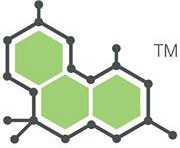
Cannabinol (CBN): The Cannabinoid That Makes You Sleepy
What Is Cannabinol (CBN)?
When we look at the construction of cannabis, we find that it has over 80 cannabinoids. Until recently, tetrahydrocannbinol (THC) was the only cannabinoid anyone seemed to care about. Thankfully recent research, particularly about cannabidiol (CBD), has brought about an intense interest in all the cannabinoids.

As is the case in many of the known cannabinoids, cannabinol (CBN) stems from cannabigerolic acid (CBGA) in cannabis. The plant naturally produces enzymes (aka synthases) that convert the CBGA to one of 3 major cannabinoids: cannabichromene carboxylic acid (CBCA), cannabidiol carboxylic acid (CBDA), and tetrahydrocannabinol carboxylic acid (THCA).
When the plant develops THCA, it usually will be converted to THC as a result of heat or UV light. That being said, THCA can be converted to CBNA over time as well. Prolonged exposure to air causes the THCA to lose hydrogen molecules and oxidize; now we have CBNA. Just like the rest of the acidic cannabinoids, CBNA will convert to cannabinol (CBN) when exposed to heat or UV light.
What Are The Benefits Of Cannabinol (CBN)?
Cannabis is widely used as a sleep-aid for those who suffer from insomnia and cannabinol is the reason why. By all accounts, CBN is the cannabinoid responsible for the sedative effects of cannabis. Because of this, I tend to reserve high-CBN strains for night use.
Another use for cannabinol as an anti-bacterial. According to a Italian study from 2008, cannabinol “showed potent activity against MRSA” when applied as a topical. Topical uses also have shown promise in treating burns and psoriasis.
The research on cannabinol (CBN) is still lacking, but some early studies have suggested it could stimulate bone growth. If that’s the case, it would be helpful in treating osteoporosis. It could also help those with broken bones to recover more quickly.
Cannabinol Can Reflect The Age Of Your Cannabis
When searching for the perfect strain, it’s important to know what you’re getting. This is why lab-testing should never be overlooked. Testing facilities like Steep Hill Lab in California give patients a complete cannabinoid profile of their medicine. It’s always a good idea to check a strains profile before making a decision.
Because cannabinol is a production of degradation, it’s not usually found in high concentrations (in a collective). High levels of CBN are usually related to poor storage methods. If cannabis is stored in an airtight container of some sort, it’s unlikely that a lot of THC would convert to CBN.
Luckily, not all is lost if you’re searching your collective for a sleep-aid. The simple solution would be to allow you’re medicine to age a bit. When exposed to the air, the THC will begin to degrade and convert to CBN, a great way to fight insomnia.
Steep Hill Halent Labs has two locations in the state of California: Sacramento and Oakland. They conduct cannabis analyses, as well as research for quality control and product development.Prior to 2013, they were two separate …
